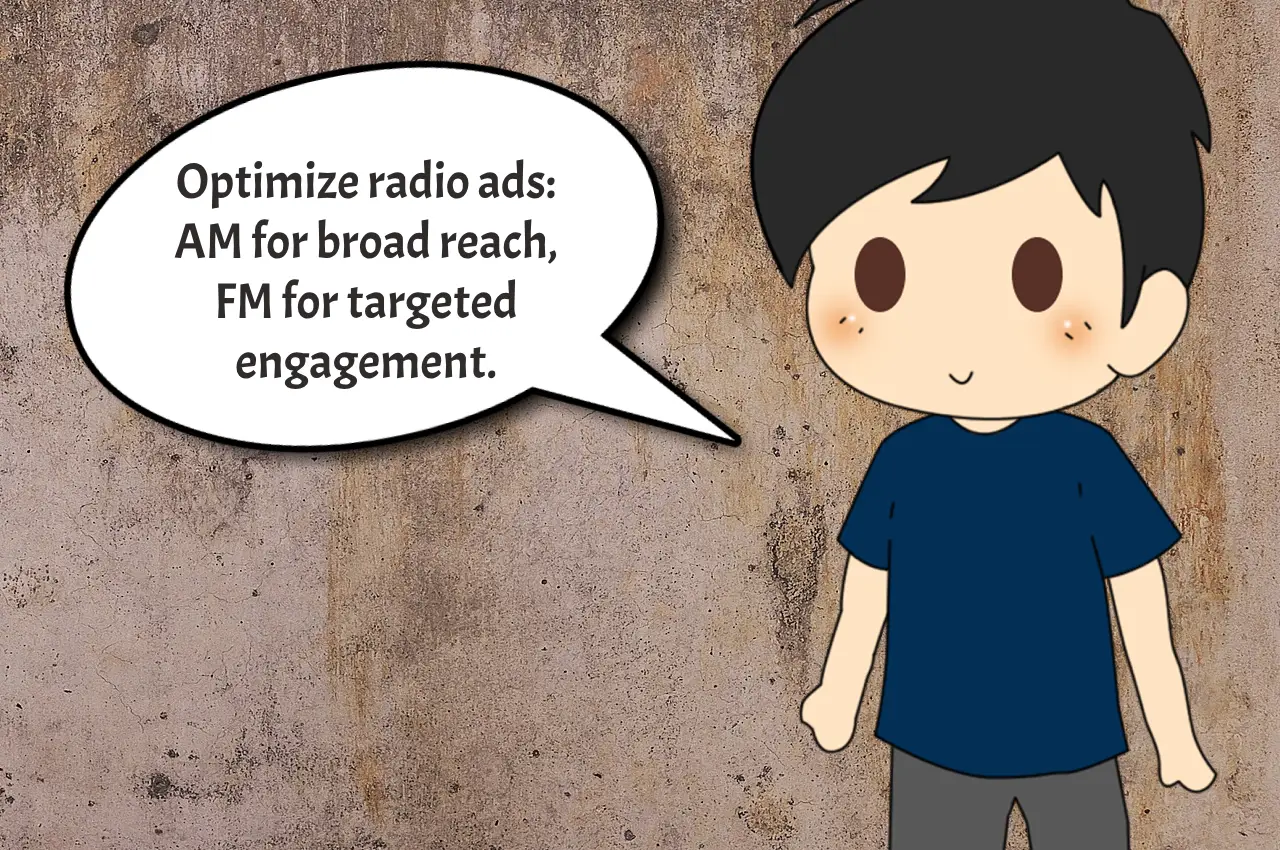When planning a radio advertising campaign, understanding the difference between AM and FM radio stations is crucial. AM, or Amplitude Modulation, is known for its longer range but lower sound quality. FM, or Frequency Modulation, offers higher sound quality and is preferred for music.
AM Radio: The Broadcaster of Choice for Talk and News
AM radio’s strength lies in its ability to cover vast areas. This makes it perfect for talk shows, news programs, and sports broadcasts. I remember when a local election campaign harnessed the power of AM radio. Their message reached far-flung areas, impacting a diverse audience.
FM Radio: The Go-to for Music and Local Reach
FM stations, on the other hand, are ideal for targeting specific demographics. Their superior sound quality attracts music lovers. A small business owner I know saw a significant increase in local patronage after advertising their weekend sale on a popular FM station.
Audience Demographics: Knowing Your Listeners
Understanding your target audience is key. AM listeners often skew older and are interested in detailed discussions. FM audiences are generally younger, attracted to music and entertainment. Align your campaign with the station that mirrors your audience’s preferences.
Budget Considerations: Balancing Cost and Reach
Cost is a significant factor. AM can be more affordable and offer a broader reach. However, FM might provide a more engaged local audience. Assess your budget and campaign goals to make an informed choice between AM and FM radio.
Evaluating Station Formats and Popularity
Research the station’s format. Is it news, talk, adult contemporary, or rock? Choose a station that aligns with your brand and message. Also, consider the station’s popularity. Higher-rated stations might cost more but can offer better exposure.
Timing and Frequency: Strategizing Your Airtime
The timing of your ads is crucial. For AM, morning and evening drive times are prime. On FM, consider the time when your target demographic is likely to tune in. Consistent, well-timed ads create better recall.
Creating Compelling Content
Your ad content must resonate with the listeners. For AM, focus on informative and persuasive speech. On FM, creative and catchy jingles can be very effective. Tailor your message to fit the station’s style and audience.
Measuring Success: Analytics and Feedback
Track your campaign’s performance. Analyze listener feedback and sales data. Adjust your strategy as needed. A local retailer adjusted their FM ad timings based on listener feedback, resulting in increased store visits.
Going Beyond Traditional: Digital and Streaming Integration
Consider integrating your campaign with digital platforms. Many radio stations offer online streaming. This can extend your reach to a digitally-savvy audience.
Leveraging Special Events and Sponsorships
Sometimes, sponsoring special events or shows on a chosen station can boost your campaign’s impact. This approach provides a more engaging and interactive platform for your message.
Understanding Regulatory Aspects
Be aware of the regulations governing AM and FM radio advertising. Different countries and regions have specific rules about what can be advertised and how. Staying compliant is crucial to avoid legal issues.
The Power of Endorsements
Using popular radio personalities to endorse your product can be highly effective. Their connection with the audience adds credibility to your campaign. Ensure their persona aligns with your brand.
Navigating Through Economic Fluctuations
Economic factors can affect radio advertising. During economic downturns, advertising rates might be more negotiable. This could be an opportunity to get more value for your investment.
Making an Informed Decision
Choosing the right station between AM and FM radio for your campaign is a mix of art and science. It involves understanding your audience, aligning your goals with the right station, and creating impactful content. Remember, radio is a powerful medium that can significantly amplify your message.
Final Thoughts
Choosing between AM and FM radio for your campaign requires a deep understanding of your audience, budget, and campaign goals. Align your choice with these factors for maximum impact. Have you experienced success with radio advertising? Share your stories and insights in the comments below. Let’s learn from each other’s experiences and drive our campaigns to new heights!





